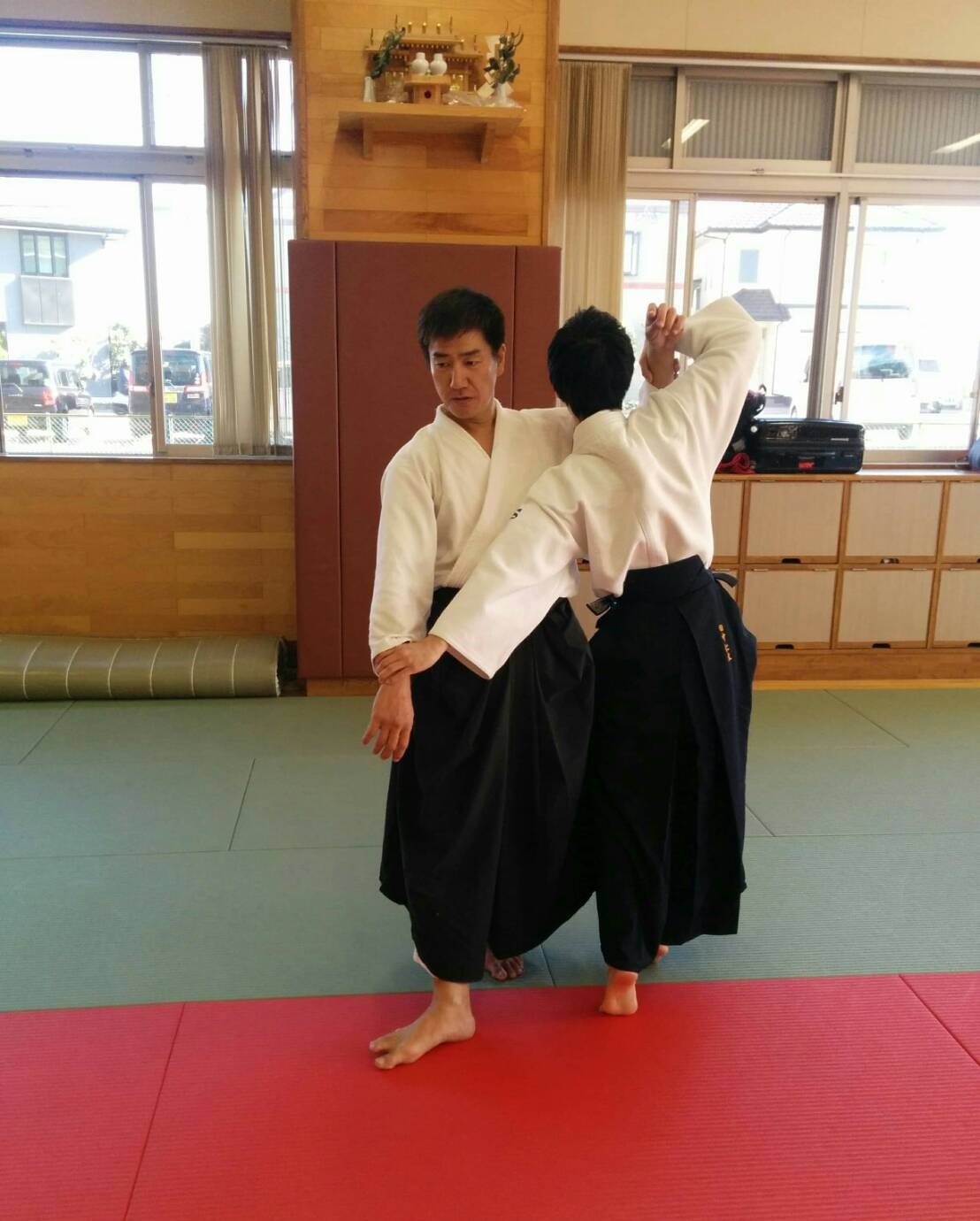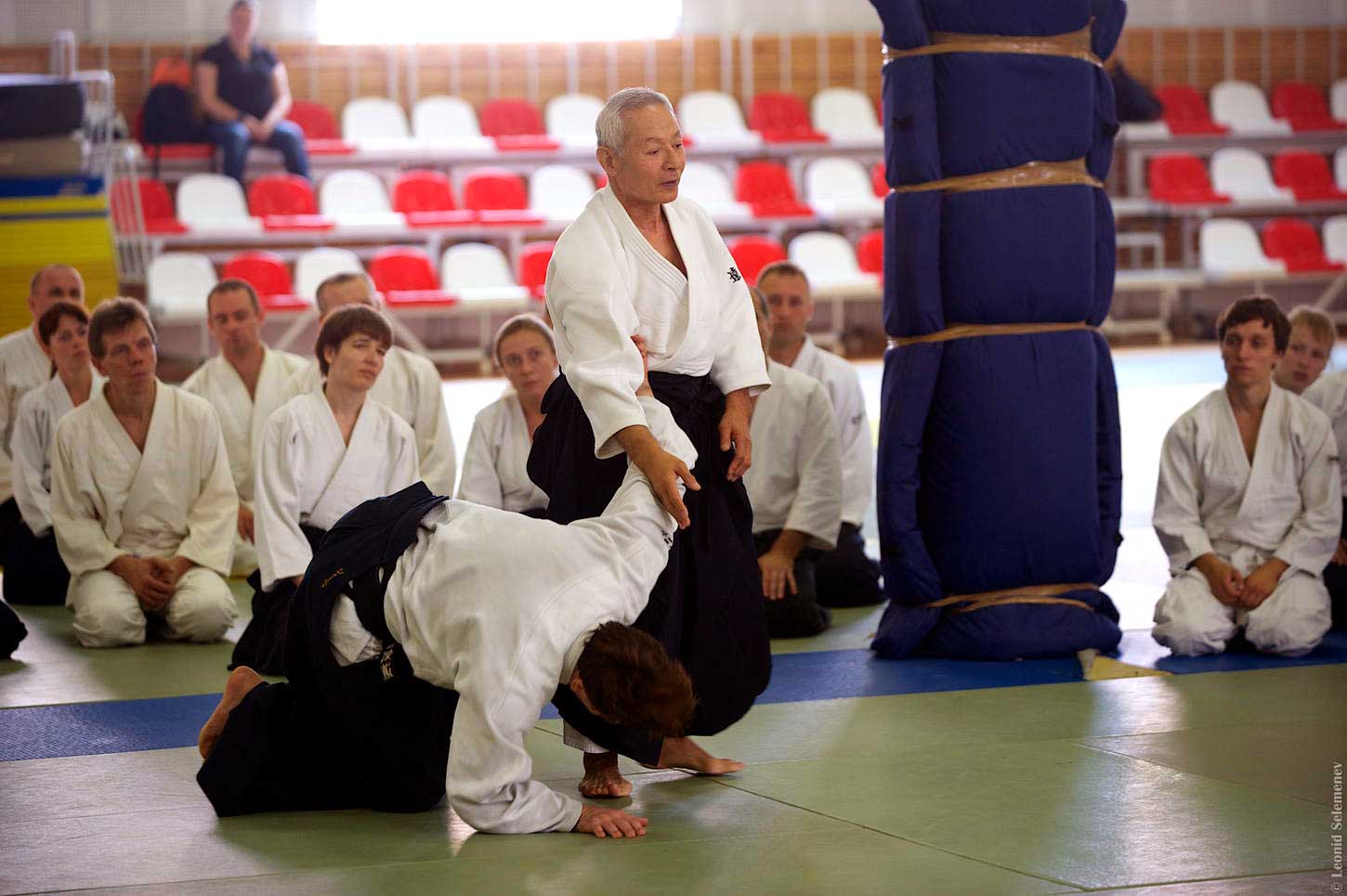
My Budo Perspective ~Tanaka Toshiyuki~
This August, at the Saku camp, I was put in charge of a practice session, which was a very valuable experience that allowed me to make some new discoveries.
During my session, I touched on several keywords.
First, I brought up ‘shinken’ (seriousness). In addition to the meaning of the word, “seriousness”, it also has the meaning of, “real sword”, or “live blade”. It is my thinking that truly joyful and pleasant practice comes from ‘shinken’ practice, practice that is without any lies, like a blade that can cut. ‘Shinken’ does not mean stern, rigid, or harsh. Perhaps “honest” or “accurate” would be similar words.
Next, I touched upon some word that are like a compass in my own practice: ‘zen’, ‘bu’ (martial), and ‘bi’ (beauty). I think these words could be interchanged with “no-mind”, “sacrifice”, and “natural body” (the body as it is naturally).
Zen, as I take it to mean, is mainly the gazing at one’s own internal condition. One tries to know the state of oneself as in order, quiet, and secure/comfortable. This includes feeling something wrong when one is disturbed from this state. At its most refined, I believe this state is “no-mind”.
The character bu consists of the parts signifying, and therefore means, “stopping two spears”. This is to say, “bringing peace to two people in conflict”. By extension, I interpret this to mean, “not creating enemies to begin with”, that is, muteki (invincible, or without any enemy).
How exactly do we go about realizing all this? I thought about the conditions needed for conflict. The minimum requirement is two people in opposition, or more simply, “two”. “Two” makes opposition possible, but if there is only “one”, then opposition is impossible. This was an epiphany for me. It is something I realized over ten years ago and is still my main theme.
Considering this physically, I thought on how two bodies could be as one. There are two ways: leaning and hanging. These are similar but different from pushing and pulling. In leaning and hanging, one is conscious only of supporting oneself. However, in pushing and pulling, there is an intent to do something to someone else. The sense of leaning and hanging are connected to the losing of the distinction between oneself and the environment, by harmonizing oneself (as achieved by zen) and the external environment. (Of course this might be the meaning of zen regardless.) In order to truly achieve the state of leaning and hanging, one must throw away the sense of protecting oneself and have the conviction to trust oneself to the environment. I call this conviction, “sacrifice”. So, “no-mind” and “sacrifice” have the same root and are also the same as zen and bu. Mentally, in order to make “two” into “one”, one must lose oneself and be nothing, and be only the opponent. To lose oneself could be achieved by making oneself very small and invisible or very big and thin. To lose oneself and also to know the difference between pushing and leaning, and pulling and hanging, brings about a significant difference in the way one is. This difference is that of ma (space). There is ma of space and of time. “Space” is distance, position, and posture. “Time” is timing, rhythm, and the rhythm, or breath, between oneself and the partner. In the case of good ma, there is dynamism without busy-ness. There is inevitability and the power to persuade those who are witnessing it. This persuasive power is bi (beauty).
Furthermore, I think the good, comfortable feeling we instinctively have to always maintain this balance is also bi. Also, this state of bi is a fundamental state without preparation or guardedness, one of neutral position. Mentally speaking, this is a mind that waits, a mind that would be cut, so to speak. To be prepared or on guard is a state of predicting something, of intention, of having an inclination toward something – a distorted state. A “true” state of preparedness – a stance – is one that is not predicting, without any direction – the “stance of no stance”.
Finally, I’d like to come back to shinken. I’ve heard that the reason that practice uniforms are white is because they used to represent the remains of a funeral shroud, which the samurai wore on a usual basis. They wore their dogi to face opponents in the dojo. At this point, two opponents facing each other would be the same – simply two people, each with life. There is no position or prestige. Of course no rank or sex. Nor height, weight, country or religion. Regardless of anything, the unavoidable condition every person is born with is “body and lifespan / limited life”. Although there are individual differences, they are not that significant. So, we have these two people facing off against each other, seriously (shinken). In doing so they each offer their respective “body and life”. This is what I believe a dojo is.
Please, before teaching someone, learn, yourself. Before looking at the partner, feel, yourself. Throw away country, rank, sex. Regarding body size, understand that there are advantages and disadvantages to each.
Even then, when we still want to do something for partner, I think it is simply to continue taking serious, yet safe, uke without any thought. Anything else is just interference in the partner’s practice.
In order to further stimulate the possibilities within aikido, it is crucial to rid ourselves of any baseless confining consciousness, that is, of restraints that we can throw away.
